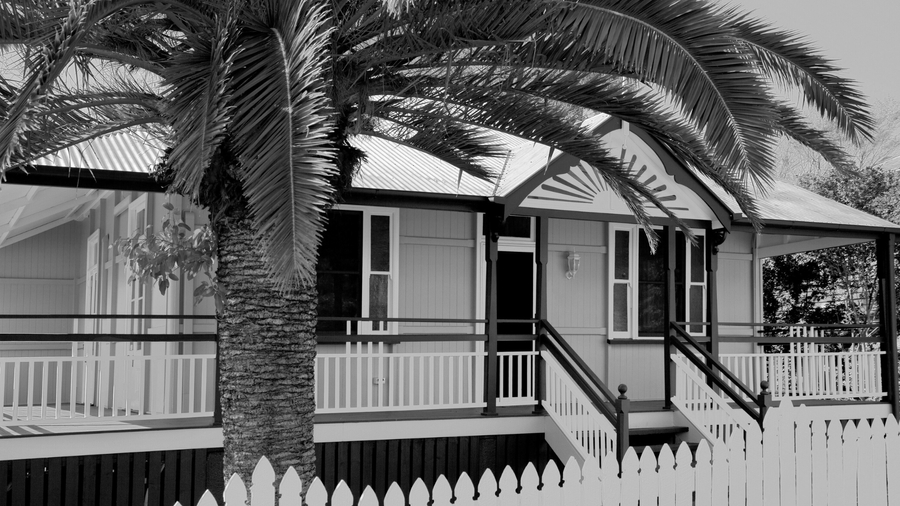Wealth Street Journal: Week 6, 2025
11 February 2025
Top 5 headlines from this week’s Australian real estate news
- Banks lower fixed rates: Major banks, including Macquarie and NAB, have begun reducing fixed mortgage rates, signalling confidence in a potential RBA rate cut as early as February.
- Regional markets outperform cities: Regional property prices are rising faster than capital cities, with Adelaide and Darwin leading, as regional house prices grew by 0.4% while capital cities declined by 0.2%.
- Infrastructure drives property growth: Billions in infrastructure spending are fueling property demand, with hotspots in Darwin, Brisbane, Adelaide, and regional areas.
- Apartments outperforming house prices: Rising house prices and affordability issues are driving more buyers toward units, with faster price growth expected through 2026.
- Rental growth slows down: Rental price increases are easing, but median rents remain at record highs, with Build-to-Rent projects set to boost supply.
Banks lower fixed rates
Australia’s major banks are cutting fixed rates, signaling confidence that the Reserve Bank of Australia may soon adjust official interest rates.
Macquarie Bank led the change in mid-January, followed by NAB this week.
NAB Economist, Alan Oster, predicts the RBA will cut rates by 25 basis points in mid-February.
This follows a decline in underlying inflation from 3.5% to 3.2% in the December quarter. While inflation is slowing, it remains above the RBA’s 2%–3% target range.
Commonwealth Bank, ANZ, and Westpac now expect a February rate cut. The cash rate has been at 4.35% since November 2023.
According to Canstar, a 25-basis-point cut would reduce mortgage repayments by $92 per week on a $600,000 loan.
Canstar Data Insights Director Sally Tindall expects more banks to follow.
“The cost of wholesale fixed rate funding has started to ease slightly. This, combined with a prospective cash rate cut, should push other banks into moving on fixed rates,” she says.
Regional markets outperform cities
New data confirms changing trends in Australia’s property markets, with regional and apartment markets now performing best.
CoreLogic reports that Perth is no longer leading the nation in price growth.
Regional markets have outperformed capital cities for some time, and data from January confirms this trend.
According to CoreLogic, in January, median house values in capital cities fell 0.2%, while regional areas increased by 0.4%.
A similar pattern is seen in apartments, with capital city values dropping 0.2% while regional areas increased 0.5%.
Of the 15 major markets analysed, nine saw median house values rise, with the same number showing growth in apartment values.
Perth, which led price growth for two years, saw median house values rise only 0.3% in January and 1.7% over the quarter. This is a sharp drop.
Adelaide recorded the highest house price growth in January at 1.7%, followed by Darwin (0.6%). Brisbane and Perth tied for third at 0.3%.
For the quarter, Darwin (2%), Adelaide (1.7%), and Brisbane (1%) all outperformed Perth (0.8%).
Regional markets in South Australia, Queensland, and Tasmania also performed better than Perth in the December quarter.
Infrastructure drives property growth
Infrastructure investment is a key driver of property price growth, and Australia is spending more than ever.
“The level of infrastructure investment currently occurring in the nation is unprecedented, in my experience, which is more than 40 years of researching and writing about real estate issues,” says Terry Ryder.
Projects completed or underway in 2024 totalled over $500 billion, with another $370 billion in advanced stages of planning.
Major developments include hospitals, universities, airports, motorways, rail links, shipbuilding enterprises, and renewable energy projects like wind and solar farms.
Governments have ramped up spending to stimulate the economy following COVID-19 lockdowns and avoid recession.
Infrastructure projects create long-term property demand by attracting workers and businesses.
A new $1 billion hospital, for example, could generate 3,000–4,000 construction jobs and up to 6,000 permanent jobs once operational.
Ryder’s analysis of per capita infrastructure spending highlights major impacts in Darwin, Brisbane, Adelaide, and Melbourne, as well as regional Queensland and South Australia.
For investors, areas with major infrastructure projects are prime locations for future capital growth.
Apartments outperforming house prices
Unit prices are expected to continue outpacing house prices over the next two years.
KPMG’s analysis shows that rising house prices and limited land availability are driving buyers toward units.
KPMG Chief Economist Brendan Rynne expects this demand to push unit prices higher.
He forecasts unit price growth of 4.6% in 2025, compared to 3.3% for houses.
“The shift is largely driven by ongoing affordability constraints, particularly in capital cities where the escalating prices of detached houses have left a large portion of the population priced out of that sub-market,” Rynne says.
“Attached dwellings offer relatively lower entry points compared to houses, making them more viable options for a larger pool of buyers.”
By 2026, Melbourne and Sydney are expected to lead unit price growth.
As of February 2025, PropTrack reports Sydney’s median house price at $1.437 million and median unit price at $815,000. Melbourne’s median house price is $898,000, while its median unit price is $583,000.
Rental growth slows down
Rental price growth has slowed, but median rents still hit record highs.
REA Group’s latest Rental Report shows national advertised rents increased by 1.6% in the December quarter, reaching $620 per week.
Capital city rents averaged $640 per week, while regional markets remained unchanged at $550 per week.
After three years of rapid increases, rental growth is now at its slowest pace since 2021.
Brisbane (1.6%) and Canberra (3.3%) were the only capital cities with rent increases in the quarter.
While no markets declined, Sydney, Melbourne, Adelaide, Perth, Hobart, and Darwin saw no changes from the previous quarter.
Despite slowing growth, investors will be pleased the report shows gross rental yield is unchanged over the past year.
National gross rental yield was 4.4% in December 2024, the same as December 2023.
Minor fluctuations occurred across markets, but changes were generally small, according to the report.
Knight Frank’s latest Build-to-Rent Update predicts more rental supply in 2025.
An estimated 8,900 Build-to-Rent apartments are under construction, with 20,000 more approved over the next five years.
Catching up on Australian real estate news?
Read our last Australian real estate news article covering:
- Land prices keep rising: Median land prices have surged 7.6% nationally, with Brisbane and Perth seeing the biggest increases, making regional areas a more attractive option.
- Home construction falls short: Despite 45,000 new homes completed last quarter, construction is not keeping pace with demand, intensifying pressure on affordability.
- New property selling rules: From January 1, all property sellers must obtain an ATO clearance certificate to avoid a 15% withholding tax, with the ATO also cracking down on undeclared rental income.
- Auction market gains momentum: After the usual holiday slowdown, auction activity is picking up, with Adelaide and Melbourne leading in clearance rates.
- WA leads economic rankings: Western Australia tops the nation’s economic rankings, driven by strong retail spending, low unemployment, and high housing finance activity.
Make property investment work for you
We transform market insights into actionable strategies. Property investment offers powerful benefits, including tax savings, debt reduction, wealth creation, and a secure retirement plan.
For buyers: Take your first step or make your next move with confidence.
For brokers and professionals: Whether you’re a mortgage broker, accountant, or financial planner, we empower you to grow your business by helping your clients invest smarter.

Get Started
Every success story starts with a leap of faith. Start a conversation with us.










